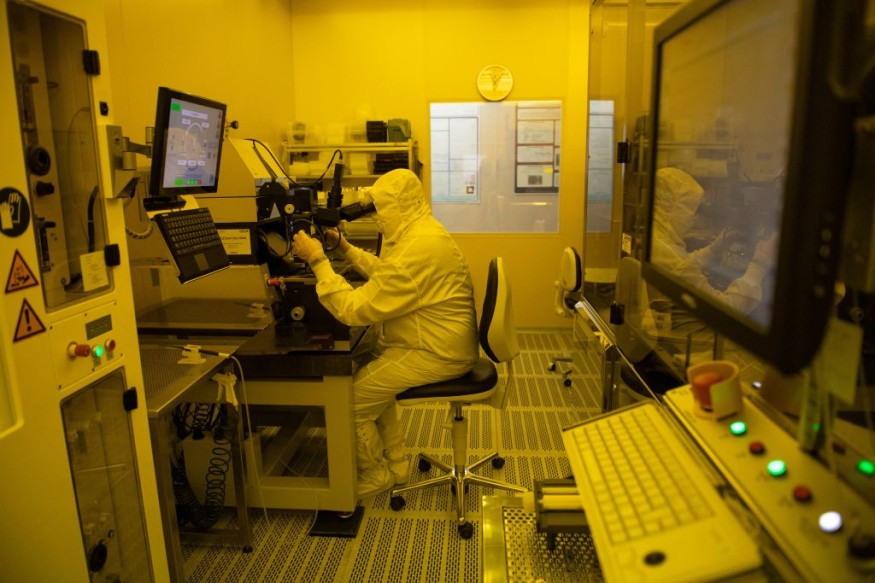In a new study, researchers used a single-step hydrothermal approach to synthesize hollow cuprous oxide@nitrogen-doped carbon or HCONC nanocapsules for catalyzing the cascade response and enhancing the efficacy of chemodynamic therapy or CDT.
According to a Phys.org report, in the said research, a collaborated team of researchers led by Professor Wang Hui from High magnetic Field Laboratory, Hefei Institutes of Physical Science or HFIPS, Chinese Academy of Sciences or CAS reported the synthesis of HCONC by the said one-step approach and their applications in effective CDT.
'Nanocapsules' provide new solution for efficient cancer chemodynamic therapy https://t.co/h1MXu3Zokx
— PhysOrg Physics News (@physorg_physics) March 14, 2022
In recent years, CDT responsive to tumor microenvironment or TME has received extensive attention because of its low invasiveness and high selectivity.
Among different metal-based nanocatalysts, the low redox potential of Cu+/Cu2+ in cuprous-based nanocrystals is endowing them with higher reactive oxygen species or ROS yields and decreased glutathione, GHS overexpression which can be seen great promise as well, as a "Fenton-like agent" under comparatively loose circumstances.

Not the Traditional Capsules
The vulnerability to oxidation, as well as the potential ionic toxicity though, of cuprous-based nanocatalysts seriously restricts their applications in nanomedicine.
Consequently, it is essential to develop the cuprous-based nanocatalyst with favorable biocompatibility to deplete the GSH's overexpression for the enhancement of CDT.
These nanocapsules comprising nanoparticles, the researchers describe in their study, Hollow Cuprous Oxide@Nitrogen-Doped Carbon Nanocapsules for Cascade Chemodynamic Therapy, published in the journal, Small, "is not capsules in the traditional sense."
Rather, it is a core-shell structure formed by attaching a thin layer of carbon through the hollow cuprous oxide or Cu2O nanocrystals surface, which not just affectionately stops the oxidation of Cu+, but increases as well, the stability of Cu2O nanocrystals.
Nanocapsules
ScienceDirect, in particular, describes nanocapsules as "composed of polymeric membranes and core of oil," which is encompassing drugs that can diffuse out under suitable conditions, by reacting to biological, chemical, environmental, chemical, or thermal stimulations.
Essentially, nanocapsules are colloidal. They are synthesized by interfacial deposition of preformed polymers including PLA, PLGA, PCL, and PEG.
They are appropriate for hydrophobic drugs delivery. Lipid nanocapsules, in particular, have been used for multi-drug resistant conditions in rat tumors.
Even though not much work or research has been carried out on the delivery of drugs to RCC using nanocapsules, researchers have proposed a novel hybrid protein-lipid polymer nanocapsule of "180 nm" as a non-toxic drug for co-delivery of transcription factor p53 and lipophilic drug paclitaxel to induce HeLa cell apoptosis. This then gives the incentive to attempt using nanocapsules for the delivery of drugs to RCC.
With Outstanding Antitumor Ability
Essentially, Cu+-mediated Fenton-like reaction in HCONC can effectively catalyze H2O2 to produce OH, and the Cu+ released in the TME can decompose as well, overexpressed GSH to shield nascent ROS.
Both experiments involving in vitro and in vivo procedures show that HCONC has outstanding antitumor ability minus causing systematic toxicity.
Professor Wang explained that the entire process can be described in an old saying that as the medication took effect, "the symptom lessened.
Related information about nanotechnology for cancer therapies is shown on John Hopkins Institute for NanoBioTechnologies' YouTube video below:
RELATED ARTICLE : Magnetic Nanoparticles Develop As New Computational Tool Potentially Useful for Drug Delivery, Among Others
Check out more news and information on Nanotechnology in Science Times.
© 2025 ScienceTimes.com All rights reserved. Do not reproduce without permission. The window to the world of Science Times.











